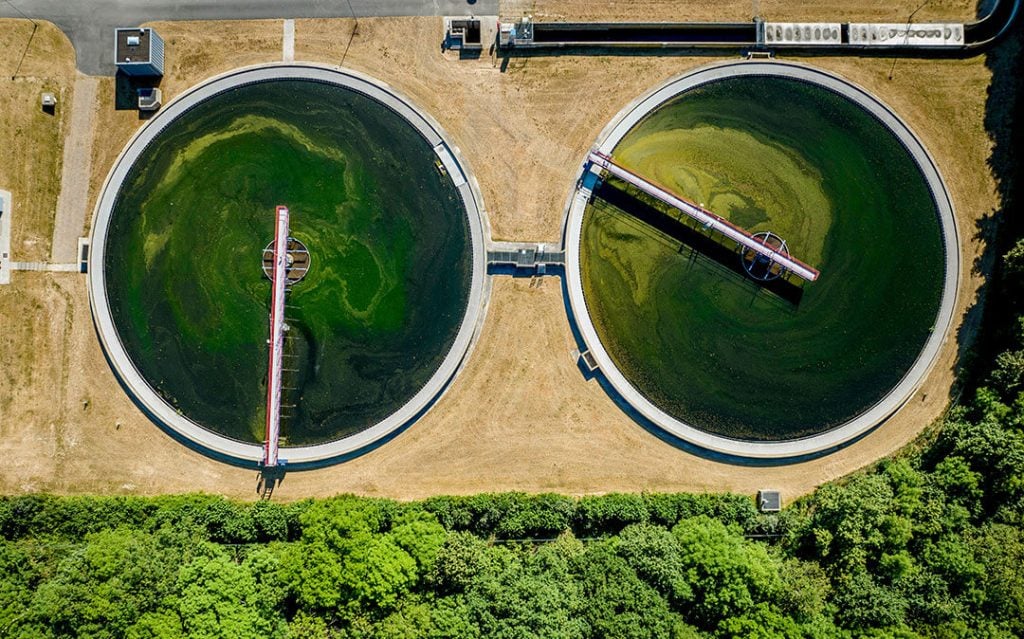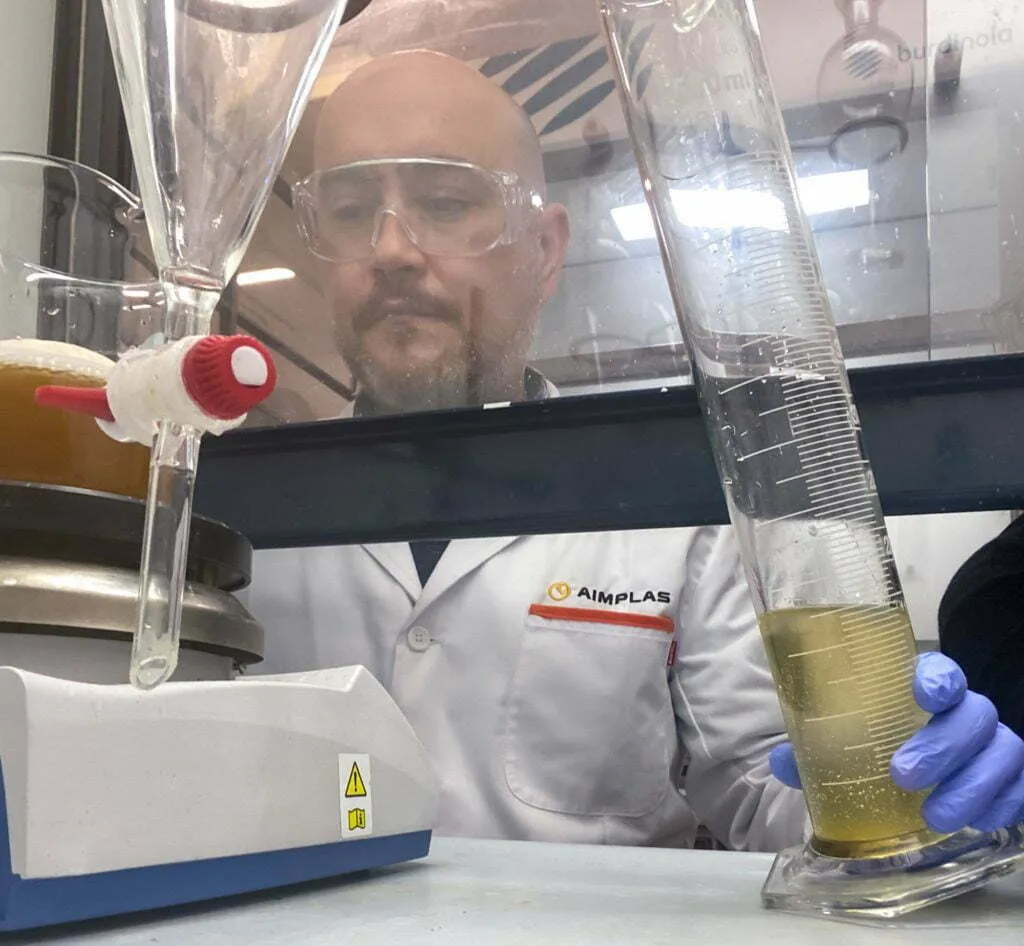Forever chemicals: Presence of PFAS in the water cycle

Per- and polyfluoroalkyl substances, collectively known as PFAS, comprise a vast family of synthetic compounds, with over 10,000 molecules identified to date. Since the mid-20th century, these substances have been widely used due to their exceptional physicochemical properties, particularly their thermal and chemical resistance. This durability is attributed to the strength of the carbon-fluorine bond, considered one of the most stable in organic chemistry, making PFAS highly resistant to environmental degradation. For this reason, they are commonly referred to as “forever chemicals.”
The versatility of PFAS has led to their incorporation into numerous industrial and consumer products: from non-stick coatings (such as Teflon), waterproof textiles, and food packaging, to firefighting foams (aqueous film-forming foams, AFFF), cleaning products, waxes, paints, and cosmetics. This wide range of applications results in multiple pathways for environmental emissions. These include direct sources, such as industrial discharges or firefighting facilities, and indirect sources related to the everyday use and disposal of PFAS-containing products. The latter release small quantities of compounds that may reach water, air, or soil through municipal solid waste, landfill leachates, or domestic effluents.
Although not all PFAS share the same toxicological profile, recent epidemiological and toxicological studies have shown that chronic exposure to certain compounds—such as PFOA, PFOS, or PFHxS—can have harmful health effects. Notable impacts include disruptions in lipid metabolism, liver, endocrine, and immune dysfunctions, as well as potential effects on fertility and early-life development. Agencies such as EFSA, the EPA, and the WHO have already established exposure thresholds and preventive recommendations to limit PFAS presence in the environment and reduce risks to human health.
PFAS Presence in Wastewater and Drinking Water
PFAS are frequently detected in both municipal and industrial wastewater, posing a major challenge for treatment systems. Their extraordinary chemical stability prevents them from breaking down effectively during conventional treatments, allowing them to pass into treated effluent and, consequently, be released into receiving environments. Moreover, some treatment processes can transform PFAS into more mobile or, in some cases, even more toxic compounds.
The main sources of PFAS contamination in wastewater include industrial discharges, the use of AFFF foams (especially in airports and military bases), household products such as textiles or cookware, and the degradation of fluorinated waste in landfills or biosolids. The most commonly detected compounds are PFOS, PFOA, PFHxS, and PFBS, with concentrations ranging from tens to several hundreds of nanograms per liter in treated waters.
In the case of drinking water, several European studies have confirmed the presence of PFAS in supply systems, even after conventional treatment. This contamination is usually linked to infiltration of affected groundwater or the inability of treatment plants to fully remove these compounds. Although detected levels are generally below legal limits, some regions have reported concentrations approaching or exceeding reference values.
Current Regulation and Trends in Europe and the United States
In the European Union, the most recent regulatory framework on drinking water is Directive (EU) 2020/2184, which sets specific limits for PFAS presence in water intended for human consumption. As of January 2026, Member States must ensure that the sum of 20 priority PFAS does not exceed 100 ng/L, and that the total sum of PFAS detectable by advanced methods does not exceed 500 ng/L. Spain has already incorporated these thresholds into its national legislation through Royal Decree 3/2023, advancing their application in supply systems.
As for wastewater, there are still no binding limits at the EU level. However, Directive (EU) 2024/3019 on the treatment of urban wastewater frequently references PFAS, although it does not set specific limits. For instance, Article 21, section 3, states that in urban areas with a minimum of 10,000 inhabitants, competent authorities must monitor inflows and outflows of urban wastewater treatment plants; in cases where wastewater is discharged into a catchment area, Member States may choose to use the parameter “PFAS Total”, “Sum of PFAS”, or both. Furthermore, the Commission will adopt implementing acts for PFAS measurement by January 2, 2027.
At the same time, countries such as Germany, Denmark, the Netherlands, Norway, and Sweden have submitted a joint proposal to ECHA to restrict PFAS use as a group under the REACH regulation, applying the “essential use” principle as a criterion for authorization.
In the United States, the Environmental Protection Agency (EPA) adopted a historic regulation in April 2024 establishing the first mandatory federal limits for PFAS in drinking water. These include a maximum of 4 ng/L for PFOA and PFOS, and 10 ng/L for PFHxS, PFNA, and GenX, along with a mixture index to account for combined exposure effects. The implementation plan requires sampling by 2027 and remediation of exceeded levels by 2029. However, a recent review in May 2025 has postponed the enforcement of some of these limits until 2031, pending a reassessment of the risks.
Regarding wastewater, the EPA has not yet set binding federal limits for PFAS discharges, though it has issued technical guidelines for specific industries. Some states, such as California, New Jersey, and Michigan, have gone further by establishing their own, stricter regulations for industrial discharges.
Addressing PFAS Pollution: Moving Toward Solutions
The presence of PFAS in wastewater and drinking water is a well-documented phenomenon that poses significant challenges to both public health and environmental protection. Their resistance to degradation, combined with global distribution, demands more comprehensive and coordinated regulatory approaches. Europe and the United States have begun to impose increasingly strict limits on these compounds, though wastewater regulation and the joint assessment of PFAS mixture exposure still require substantial progress. In this context, improving treatment technologies, systematic monitoring, and transitioning toward the essential-use principle are key steps to mitigating their impact.
At AIMPLAS, we work on R&D projects involving the analysis of PFAS in wastewater, as well as other emerging microcontaminants (such as phthalates, pharmaceuticals, bisphenols, etc.) that are of growing concern in wastewater and other matrices. Our aim is to help monitor and predict the environmental status of our surroundings and ensure the safety of our products. Additionally, we are developing alternative fluorine-free polymers and exploring new materials and product redesigns to avoid the critical functions of PFAS.


